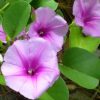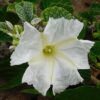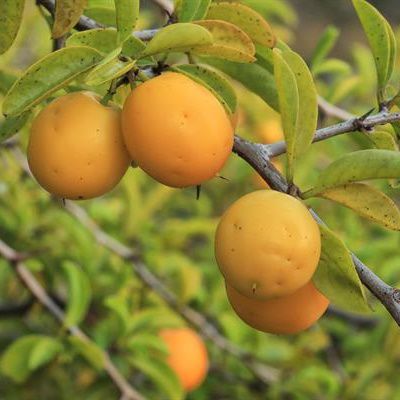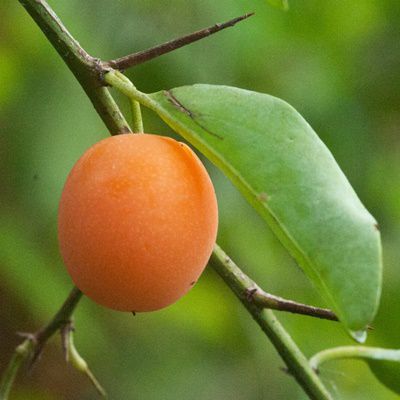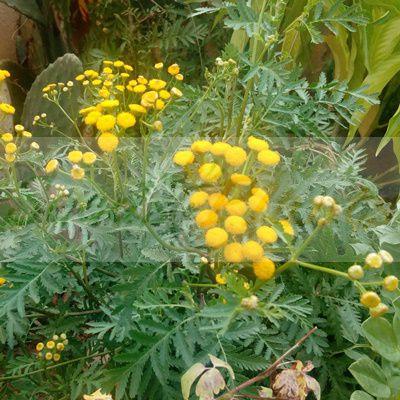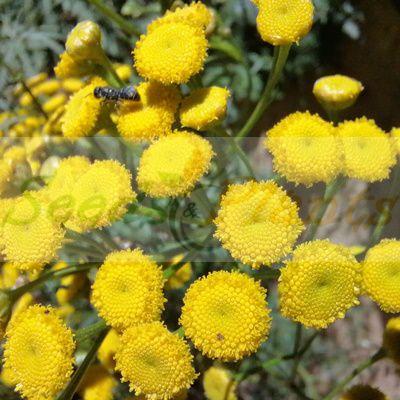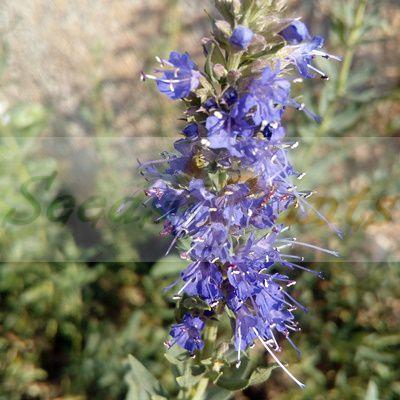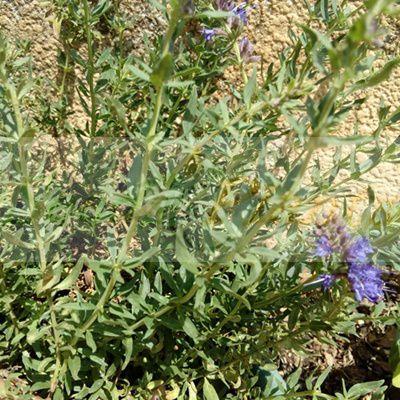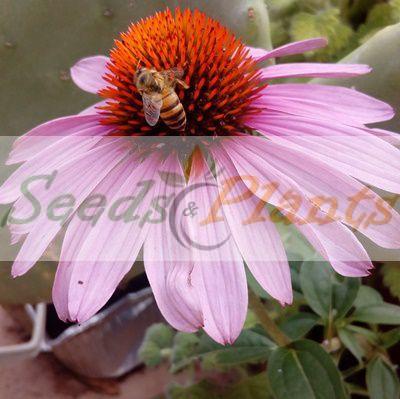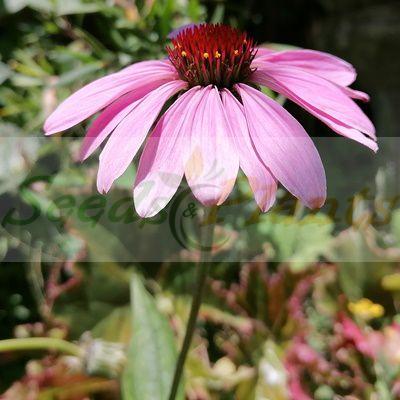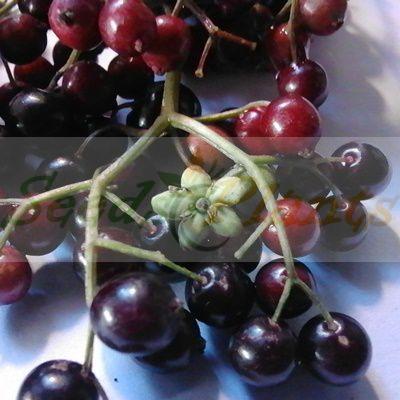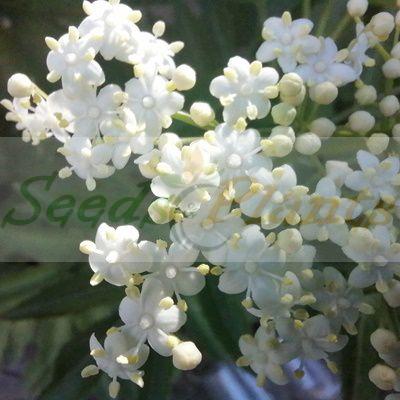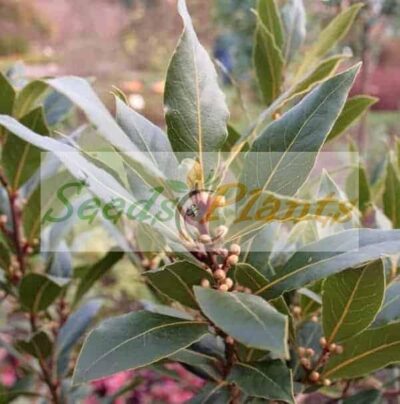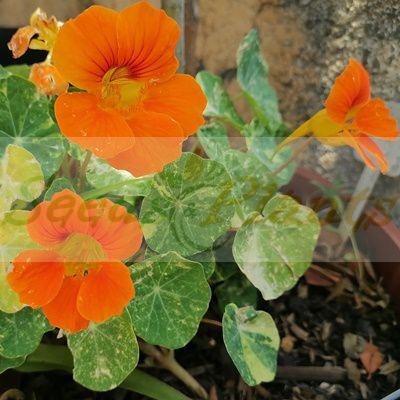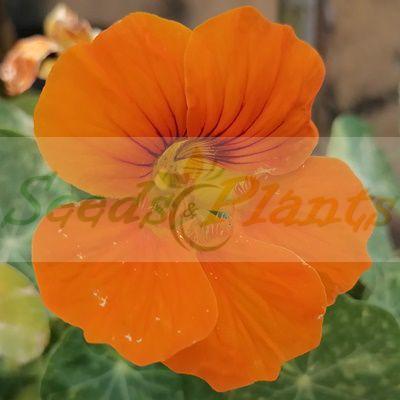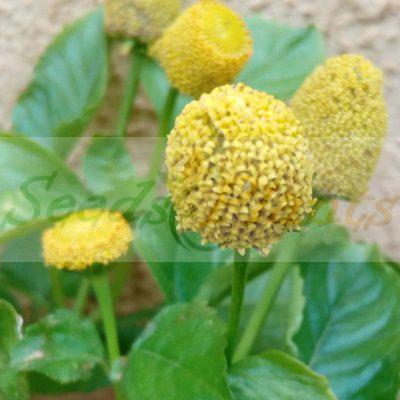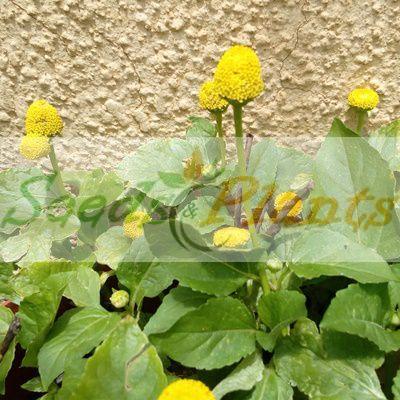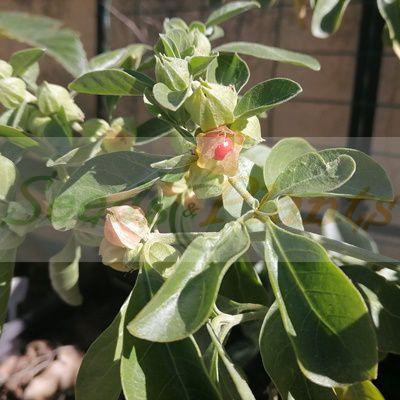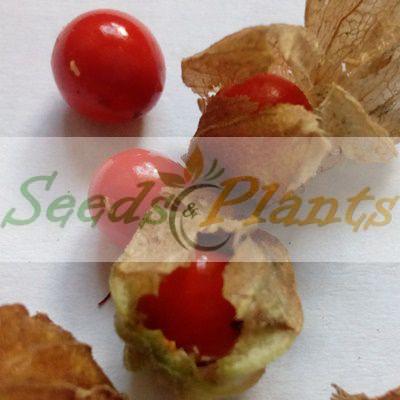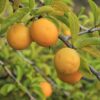🍒 Fruit Quick Facts
Fruit Info
- 🌍 Origin / Region: Australasia, East Africa, North America, South America, Southern Africa, West Africa
- 🍽️ Culinary Use: Beer / Wine, Cooked greens, Jams and Jellies, Juices and Syrups, Lemon Substitue, Pickling, Raw Eating
- 🥗 Edible Part: Fruit pulp, Leaf
- 😋 Flavor Profile: Sweet-tart
Medicinal Info
- 🌿 Medicinal Part: Bark, Fruit, Leaf, Root, Seed
- 🍵 Herbal Preparation: Decoction, Extract / Tincture, Infusion / Tea, Ointments/Creams, Powder, Syrup
- ⚕️ Healing System: African Traditional Medicine
Growth Traits
- 🌱 Life Cycle: Perennial
- 🌾 Plant Type: Tree
- 🔁 Fruiting Needs: Needs Only 1 Plant
- 🪴 Growth Habit: Bushy, Sprawling, Spreading
- 🌸 Flower Color: Greenish-white, White, Yellow-green
- 🌿 Foliage Type: Evergreen
- 📏 Mature Height: 1.8-4.5m
- 🦋 Pollinator Method: Attracts Bees, Attracts Birds, Attracts Wasps, Self-pollinating
Growing Requirements
- 🌞 Sun Exposure: Full Sun, Partial Shade
- 💧 Water Needs: Avoid Overwatering, Low Water
- ☀️ Growing Conditions: Drought Tolerant, Dry Conditions
- 🟤 Soil Preference: Clay, Dry, Loam, Poor Soil Tolerant, Sandy
Blue Sour Plum – 5 Seeds
(Ximenia americana)
R30.00
Blue Sour Plum is one of the most valuable wild edible plants in the world. It is used as food, medicine and an essential oil source.
Common names: small blue sourplum, hog plum (Eng.); kleinblousuurpruim (Afr.); ukolotshane, umtunduluka-omncane, umkholotshwana (Zul.);umtfundvuluka, umthunduluka (Swa.); ntsengele (Tso.); morotologana (Tsw.); morotologa, motshidi, hwele, mosidi-wa-serotologane (N.So.); mutanzwa (Ven.) holotshani (Nde.)
Indoor Sowing: Summer.
Direct Sowing: Late Spring and Summer.
Out of Stock
Email me when the product is back in stock.
🍒 Fruit Quick Facts
Fruit Info
- 🌍 Origin / Region: Australasia, East Africa, North America, South America, Southern Africa, West Africa
- 🍽️ Culinary Use: Beer / Wine, Cooked greens, Jams and Jellies, Juices and Syrups, Lemon Substitue, Pickling, Raw Eating
- 🥗 Edible Part: Fruit pulp, Leaf
- 😋 Flavor Profile: Sweet-tart
Medicinal Info
- 🌿 Medicinal Part: Bark, Fruit, Leaf, Root, Seed
- 🍵 Herbal Preparation: Decoction, Extract / Tincture, Infusion / Tea, Ointments/Creams, Powder, Syrup
- ⚕️ Healing System: African Traditional Medicine
Growth Traits
- 🌱 Life Cycle: Perennial
- 🌾 Plant Type: Tree
- 🔁 Fruiting Needs: Needs Only 1 Plant
- 🪴 Growth Habit: Bushy, Sprawling, Spreading
- 🌸 Flower Color: Greenish-white, White, Yellow-green
- 🌿 Foliage Type: Evergreen
- 📏 Mature Height: 1.8-4.5m
- 🦋 Pollinator Method: Attracts Bees, Attracts Birds, Attracts Wasps, Self-pollinating
Growing Requirements
- 🌞 Sun Exposure: Full Sun, Partial Shade
- 💧 Water Needs: Avoid Overwatering, Low Water
- ☀️ Growing Conditions: Drought Tolerant, Dry Conditions
- 🟤 Soil Preference: Clay, Dry, Loam, Poor Soil Tolerant, Sandy
Small Blue Sour Plum (Ximenia americana) is a spiny shrub that bears brightly colored, edible fruits. It is one of the most valuable wild edible plants in the world. In different countries, it is utilized as food, medicine, an essential oil source, and as a component in the production of other products. It is known to naturally occur in tropical America, Asia and Africa, covering the northern and eastern parts of South Africa, as well as the southern and western parts of Africa.
The shrub or small tree can grow up to 6m in height, with the branches normally arching downwards, often armed with straight spines. The shrub can be grown as a hedge if pruned properly. In spring it produces small, greenish white, fragrant flowers, borne on short shoots.
This is followed by oval, shiny, light green fruits that grow up to 30mm long, and turn yellow, orange or red when ripe. When ripe, the fruit has a green, juicy pulp and the flavor is said to be bitter and almond like. Fruit production takes place once the tree is about 3 years old.
Common names: small blue sourplum, hog plum (Eng.); kleinblousuurpruim (Afr.); ukolotshane, umtunduluka-omncane, umkholotshwana (Zul.);umtfundvuluka, umthunduluka (Swa.); ntsengele (Tso.); morotologana (Tsw.); morotologa, motshidi, hwele, mosidi-wa-serotologane (N.So.); mutanzwa (Ven.) holotshani (Nde.)
Culinary Uses:
- The fruit is eaten raw or pickled, and can be used to replace lemon in fish recipes.
- The fruit is also used to make juice, jams or alcoholic drinks.
- In South Africa, a kind of beer is made from the fruits.
- The kernel of the fruit can be made into oil, which is used in cooking as a substitute for butter or ghee.
- In Asia, the young leaves are cooked as a vegetable.
Medicinal Uses:
It has been reported to be used to treat a large number of diseases, including measles, malaria, skin infections, sexually transmitted diseases, diarrhea, muscle cramps, lung abscesses, colds, fevers and much more.
Growing Blue Sour Plum
Indoor Sowing: Summer.
Direct Sowing: Late Spring and Summer.
- Soak the seeds in lukewarm water for 12 – 24 hours.
- Plant the seeds in mixture of 5 parts soil and 1 part compost.
- Place the container in are with bright light and keep the soil mixture constantly moist, but not wet.
- Optimal germination temperature is 26-36°C. Germination can take 30 days or longer.
- Once the seedling has produced the second-phase of leaves, it is ready for transplanting.
Can this plant be used for culinary purposes?
Blue Sour Plum is traditionally used for culinary purposes such as beer / wine and cooked greens.
Does this plant have medicinal uses?
Traditionally, Blue Sour Plum has a history of use in African Traditional Medicine. Seeds are sold for cultivation purposes only.
Disclaimer
Medicinal Information:
All medicinal information on this website is for educational and informational purposes only and may not be construed as medical advice. The information is not intended to replace medical advice or treatment offered by healthcare professionals.
Seeds, Plants, Plant Cuttings, Geophytes and Dried Herbs:
In some countries and provinces, certain plants are deemed as invasive and are not allowed to be planted at all, whilst some plants are allowed to be grown only in certain areas or provinces. The onus is on you as the buyer to familiarize yourself with the regulations pertaining to your location, before purchasing any of our seeds, plants, plant cuttings, geophytes or dried herbs. We will not be held liable, should you purchase any seeds, plants, plant cuttings, geophytes or dried herbs. from us which are prohibited in your country or province.

